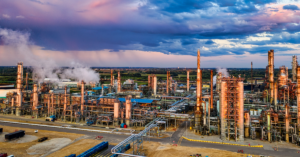In serving the manufacturing sector, we understand that it goes through ebbs and flows. There are a lot of factors that play into its state of being. As we well know, advancements in technology are beckoning an entirely new era in the industry, hence our ongoing explorations of Industry 4.0. But tech is just one factor in a full-fledged assembly line of influences. From policy to rising demands, let’s examine some of the latest drivers behind the projected U.S. manufacturing boom.
Incline in Manufacturing
As Reuters reported, industrial production grew by 1.0% in July following a decline in June. Motor vehicle production, durable manufacturing, and electronic products all supported the boost. But it’s industries such as batteries, solar, and semiconductors that are predicted to serve as the pillars of the ongoing rise.
This is especially the case when you consider the growing need for batteries to support the surging EV market. While there were only two factories dedicated to such products in 2019, TechCrunch points out that there are now around 30 planned or running in the country. Between President Biden’s Inflation Reduction Act, which encourages battery components to be manufactured in the United States, and auto leaders investing nearly $100 billion, plants are popping up in states from Michigan to South Carolina. In fact, the Census Bureau summarized that “construction spending by US manufacturers more than doubled over the past year,” according to Noah Sheidlower at Business Insider. This is largely due to the EV battery rise as well as the overall demand for renewable energy products.
Incline in Manufacturing Jobs
As emerging product trends continue to take hold and more factories are constructed, we will need professionals to manage them. While 800,000 jobs in manufacturing have already been added within the last two years, Goldman Sachs forecasts that there are around 200,000 to 250,000 more coming in the next two years.
Although that increase is good news, especially amid mounting AI concerns, this expansion in positions does also have the potential to feed into the persisting skills gap plaguing the sector. The National Association of Manufacturers has stated that the lack of specific technical training could leave 2.1 million roles vacant by 2030. Looking ahead, incline in manufacturing – particularly the new types of manufacturing – will only put more pressure on future and current employee education. Plus, it will provide even more reason to prioritize data organization, efficiency, and cybersecurity.
Sources:
- “Motor vehicles lift US manufacturing output in July” – Lucia Mutikani, Reuters
https://www.reuters.com/markets/us/motor-vehicles-lift-us-manufacturing-output-july-2023-08-16/ - “A manufacturing investment supercycle is starting” – Neil Irwin, Axios
https://www.axios.com/2023/06/16/manufacturing-supercycle - “Tracking the EV battery factory construction boom across North America” – Rebecca Bellan, TechCrunch
https://techcrunch.com/2023/08/16/tracking-the-ev-battery-factory-construction-boom-across-north-america/ - “The US is building factories at a wildly fast rate” – Noah Sheidlower, Business Insider
https://www.businessinsider.com/us-building-factories-census-data-chips-act-inflation-reduction-act-2023-6 - “America’s manufacturing boom could add 250,000 jobs in two years — report” – Emily Peck, Axios
https://www.axios.com/2023/08/21/manufacturing-job-boom-semiconductor-renewable-energy





